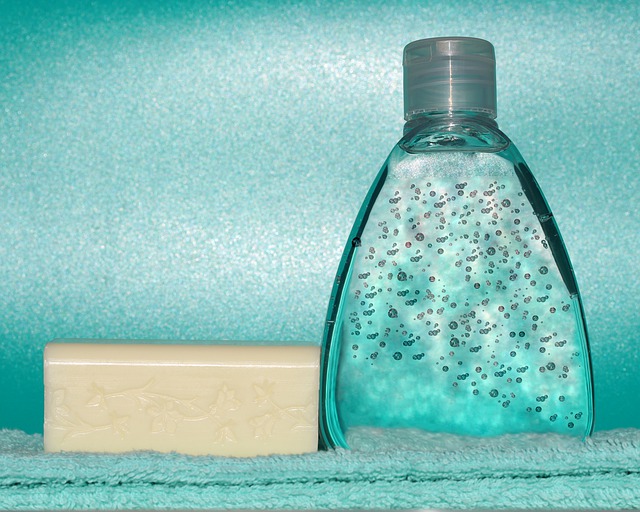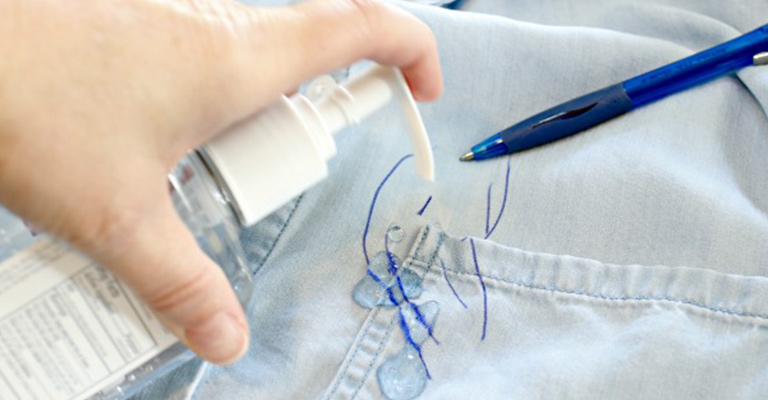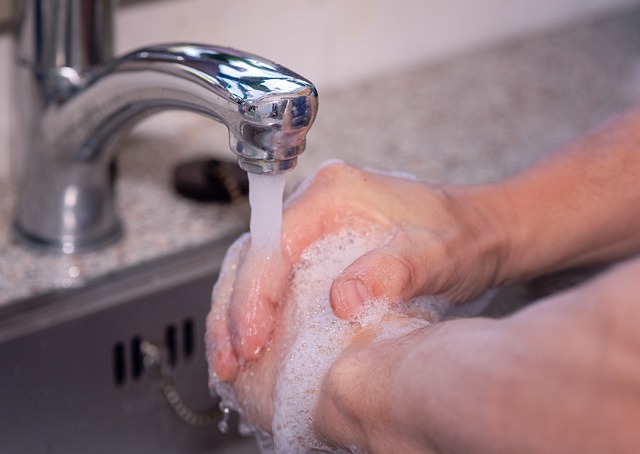
Does Hand Sanitizer Stain Clothes? Everything You Want To Know
Do you wish to know whether hand sanitizer leaves stains on clothing? Even though it is useful, if it is not thoroughly removed before touching clothing, it can damage your clothes. Washing your clothes right away after using hand sanitizer is key.
Does hand sanitizer stain clothes? Yes.
Hand sanitizer stain clothes. Some of them include benzalkonium chloride, a bleaching agent, while others include alcohol, a well-known stain remover. Clothing can lose color when the sanitizer comes into contact with it. Bleaching spots are the term for the stains.
Here’s the scoop.
Table of Contents
What Does Hand Sanitizer Do And Why Is It Beneficial?
Everyone now has a stack of hand sanitizer bottles next to their front door because of the recent pandemic. Hand sanitizer is a gel or liquid that typically contains alcohol. In order to stop the spread of germs and diseases, it is used to clean surfaces and hands.
There are many benefits of using hand sanitizer, including:
- Killing bacteria and viruses
- Removing dirt and grime
- Preventing the spread of illness
- Moisturizing hands
- Being portable and convenient
Does Hand Sanitizer Stain Clothes?
Despite not “staining,” hand sanitizers can harm some fabrics due to their ingredients, which are present in many different brands. The sanitizer may splash or spill onto clothing and other surfaces as we apply it. Small, discolored spots that may resemble stains develop when the liquid contacts fabric. In fact, the bleached areas of the fabric are where the marks are.
Due to its antibacterial properties, alcohol is one of the main ingredients in sanitizers. It is also a well-known stain remover. When it comes to our clothing, this can be a little problematic. Alcohol does not distinguish between stains and colors.
Alcohol’s stain-removing abilities depend on its capacity to function as a bleaching agent. To put it another way, it changes the appearance of an item by removing its color. Unfortunately, the bleaching process only works in the damaged areas because the alcohol is dropped in sporadic locations and minute amounts. the fabrics retaining a spotted appearance.
Does Hand Sanitizer Leave Stains?
A substance called benzalkonium chloride is present in many commercial hand sanitizers. This substance has a bleaching effect and can permanently stain clothing.
In hand sanitizers, benzoalkonium chloride is used as a surfactant, which lowers a solution’s surface tension and improves its spreadability and texture.
We advise consumers to keep an eye out for both of these ingredients in hand sanitizer and steer clear of products containing them if possible staining is a concern. Benzalkonium chloride is also marketed under the name Zephiran.
Many popular hand sanitizer brands (including Purell) also contain an ingredient listed as “fragrance” to improve the smell of the product.
The term “fragrance” is essentially unregulated in the consumers about the specific chemicals that are used in the U.S. Without this information, consumers (or researchers like us) cannot determine whether the chemicals used as fragrance are safe and stain-free, which is why we advise against using any fragrance-containing cosmetic products at all.
Some of the compounds used in fragrance could be harmful to human health, raising concerns about the long-term safety of fragrance as a cosmetic ingredient. Relevant to the subject of this article, some chemical compounds used in fragrances might stain, and since they don’t increase safety, there’s no reason to buy a hand sanitizer that contains this ingredient.
What Kinds Of Fabrics Are Ruined By Hand Sanitizers?
All kinds of clothing can be damaged by hand sanitizers. However, it affects some people more than others and has little to no effect on others.
Fabrics that have been naturally dyed, such as cotton, silk, linen, and leather, are particularly prone to deterioration.
Here are some of the clothes that are particularly affected by hand sanitizer:
Dark-colored Clothes
Stains from sanitizers are more likely to appear on dark-colored clothing. On darker-colored clothing, the bleached stains stand out more.
Leather Garments
The color of leather clothing is achieved through dyeing. When it comes into contact with them, the bleaching agent in the hand sanitizer ignites a chemical reaction. As a result of contact, the dye is removed.
Leather clothes can be cleaned of stains. Watch the video to see how it functions.
Suede
Suede is a different fabric that is vulnerable to sanitizer bleaching. The substance quickly absorbs liquid because it is porous. The fabric is more likely to sustain damage from the bleaching agent as a result.
Silk And Chiffons
Soft and delicate fabrics like silk and chiffon are susceptible to hand sanitizer stains. These delicate garments have a short color retention time and are easily faded.
If you’re like me, you frequently spill hand sanitizer on your clothes. I understand how it feels to witness your clothes being ruined. What if I told you that you could remove these stains? Scroll down to learn how. See more about Why Do We Have Hands?
Remove Hand Sanitizers From Clothes
It is difficult to remove hand sanitizer from clothing. The only thing you can think about once the fabric comes into contact with the solution is damage control.
But I do have some advice for you.
- If it hasn’t been on your clothing for a while, try gently rubbing it off. Avoid rubbing the garment too vigorously as this could cause further damage. Wash it immediately.
- Utilizing clothing accessories to conceal the bleached areas is another method of damage control.
- If you can, leave the cleaning to a pro to prevent further harm.

Remove Hand Sanitizer Stains From Your Hands
Do not be concerned if your hands have hand sanitizer stains! A few simple methods exist for getting stains off of your hands.
Rub your hands together with a dryer sheet to get rid of hand sanitizer stains. It will assist in removing the stain from your skin. Try using dish soap or laundry detergent as well. Simply apply soap to the stain and then rinse with warm water.
Try using vinegar or rubbing alcohol if the stain doesn’t come out. Rub the stained area with a cotton ball that has been dipped in vinegar or rubbing alcohol. After letting it sit for a while, give it a warm water rinse.
Remove Hand Sanitizer Stains From Furniture
There are a few straightforward ways to get hand sanitizer stains off of furniture.
Pretreating the area with dish soap or laundry detergent is one way to get rid of a hand sanitizer stain. After applying soap to the stain, clean the area with a damp cloth. You might also give vinegar or rubbing alcohol a shot. Rub the stained area with a cotton ball that has been dipped in vinegar or rubbing alcohol. After letting it sit for a while, clean it with a damp cloth.
It’s never simple to get rubbing alcohol stains out of wood, but these instructions might be helpful.
You can try using bleach if the stain doesn’t go away. As bleach can damage some finishes, always test it on a hidden portion of the furniture first. Use a clean cloth to dunk in the solution after combining one part bleach with three parts water to use it as a cleaning agent. Rub the stained area with the wrung-out cloth.
Remove Hand Sanitizer Stains From Granite
The hand sanitizer is also easily able to stain granite. There are a few straightforward ways to remove hand sanitizer stains from granite.
Pretreating the granite with dish soap or laundry detergent is one way to get rid of a hand sanitizer stain on it. After applying soap to the stain, wipe it clean with a damp cloth. Another option for removing the stain is to apply a poultice.
1/2 cup of flour and 1/4 cup of hydrogen peroxide should be combined to make a poultice. Place a piece of plastic wrap over the stained area after applying the mixture. After 24 hours, remove the poultice and clean up any leftover substance.
You can try using a commercial granite cleaner or sealer if your granite has obstinate hand sanitizer stains. Apply the cleaner or sealer to the stained area as directed on the product label.
Hard water stains on granite must be carefully removed, which is another thing that needs to be done with caution. As a natural stone, granite is susceptible to damage, which is why.
Avoid Staining Clothes While Using Hand Sanitizer
Being careful with your hand movements is the best way to prevent getting your clothes stained.
- Choose hand sanitizers that contain no more than 60% alcohol.
- Use the hand sanitizer only on your hands; avoid getting it on your body or clothing.
- Till the hand sanitizer is completely dry, keep your hands away from your clothing.
If you take the necessary precautions, using hand sanitizer won’t ever leave stains on your clothes.
Accidents do occur, as we all know. Nowadays, because we use hand sanitizer so frequently, spills are common. Using sanitizer carefully can help, even though accidents cannot always be avoided.

Other Liquids That Stain Clothes
So far, we’ve looked at stains brought on by hand sanitizers with isopropyl alcohol, also known as rubbing alcohol. Other liquids may leave stains on clothing. We all employ the first item on the list.
Water
Water can be incredibly damaging to some fabrics, from raindrops to unintentional splashes from drinks or washing. Even the smallest summer rain showers can permanently damage suede. Water damage is challenging to repair on objects not intended to be wet and leaves white watermarks on non-waterproof surfaces. The best solution is to make sure you treat your clothing with water-resistant products before going for a walk in the rain.
Liquor
Vodka, whiskey, gin, tequila, and other alcoholic beverages are all considered to be liquor. These beverages will have the same impact on your clothes as alcohol-based hand sanitizers do.
Red Wine
Another type of alcohol that is equally likely to rip your clothes. This drink will stain carpets or clothing with an enraged red blotch and is notoriously difficult to clean. You can remove a red wine stain in one of two ways.
Pull the afflicted area of clothing across a bowl until it is as snug as a drum. Sprinkle salt over the stain before covering it with boiling water. As soon as you can, make sure to wash it in hot water.
The second approach involves soaking the stain in vinegar, rinsing it out, and letting it air dry. Take your item to a dry cleaner if it can’t be washed or has a special finish.
Beer
Beer is water-based, so most stains are easy to remove. After gently dabbing the stain with a wet cloth, wash the area as soon as you can. Even a laundry stain remover will work. Consult a professional cleaner for cleaning advice if your garment is not waterproof or was not intended to be washed.
Coffee
Coffee is yet another common beverage that is also a notorious stain offender. After soaking the stain with baking soda and water, wash as usual. Coffee stains on washable clothing aren’t as difficult to get rid of as they appear. Even tough dried-on stains can be removed with stain remover.
See more about What Has 4 Letters, Sometimes 9, But Never 5
Frequently Asked Questions
How Can I Get Hand Sanitizer Stains Out Of Carpet Or Upholstery?
Use a solvent-based stain remover to get hand sanitizer stains out of carpets or upholstery. Apply the stain remover to the impacted area, and then blot it with a fresh cloth. To remove the stain completely, you might need to repeat this procedure several times.
Can I Remove Grass Stains With Hand Sanitizer?
Even though it can be challenging to get grass stains out, if you move quickly, hand sanitizer might be able to help. The affected area should be cleaned off with a fresh cloth after applying the hand sanitizer. To completely remove the stain, you might need to repeat this procedure several times.
The Hand Sanitizer’s Blue Dots Are What Kind Of Things?
The little floating beads in sanitizers are “moisturizing beads.” These are tiny glycerin-filled paint-filled pockets that serve as a thickening agent. This is an inexpensive solution to the issue of sanitizer drying out.
Can Rubbing Alcohol Be Used To Bleach Clothing?
Rubbing alcohol has a mild bleaching agent that can be seen when applied to clothing, making it possible to leave some stains behind while also leaving others behind.
Can I Clean A Cut Using Hand Sanitizer?
Hand sanitizer shouldn’t be applied to any cuts or wounds because it can harm living tissue, especially on large or deep wounds. The best way to clean wounds is with warm water and mild soap.
Will Clothing Be Stained By Rubbing Alcohol?
Yes, white clothing will become discolored if rubbing alcohol is used at full strength.
Are Car Seats Ruined By Hand Sanitizer?
Yes, hand sanitizer will leave stains on automobile seats. Black car seats will become white after being bleached by the solution.
Can You Apply Hand Sanitizer To Your Clothes?
Hand sanitizer can be applied to clothing, yes. While hand sanitizers do not leave stains on clothing, they may bleach or leave permanent stains. If you want hand sanitizer to “stain” your clothes, make sure to avoid using it on materials like wool, silk, acetate, and rayon. Cotton clothing and leather work best with it.
Does Hand Sanitizer Change In The Heat?
Hand sanitizer loses effectiveness if it is left close to heat. Therefore, it is not a good idea to leave in an environment with excessive heat.
Does Hand Sanitizer Remove Stains?
Yes, as alcohol, a substance that shows promise for removing stains from clothing, is an ingredient in hand sanitizer. Hot sauce, ink from pens, makeup, and grease stains can all be eliminated with hand sanitizer.
Does Hand Soap Leave Stains On Black Clothing?
Yes, because alcohol, a bleaching agent, is a component of hand sanitizer, it may leave white stains on black clothing.
Can Hand Sanitizer Make Clothing Bleachable?
Yes, because the hand sanitizer solution has bleaching properties, it will deteriorate and bleach clothing.
Do Hand Sanitizers Make Jeans Stained?
Bleaching ingredients found in hand sanitizers have the potential to leave stains like marks on jeans and other fabrics.
Conclusion
Sanitizers may cause bleaching, which may appear as stains. especially on clothes that are dark in color. Depending on what kind of clothing is involved, the damage can vary in severity. Bleaching damage can be challenging to repair. Avoid letting hand sanitizer touch your clothes as much as possible. It’s inevitable at times. The cleaning hints in this article should assist in cleaning your clothing or reducing the severity of the damage.
I appreciate you reading.


